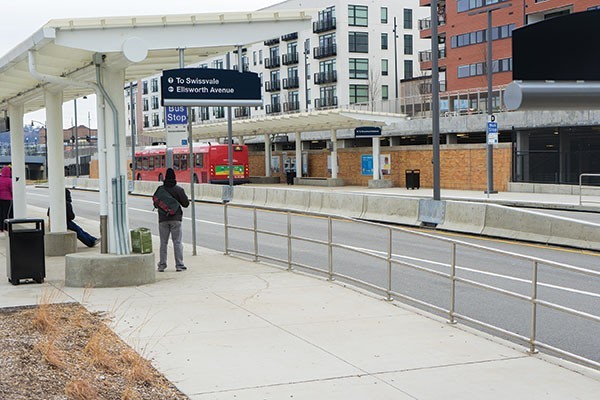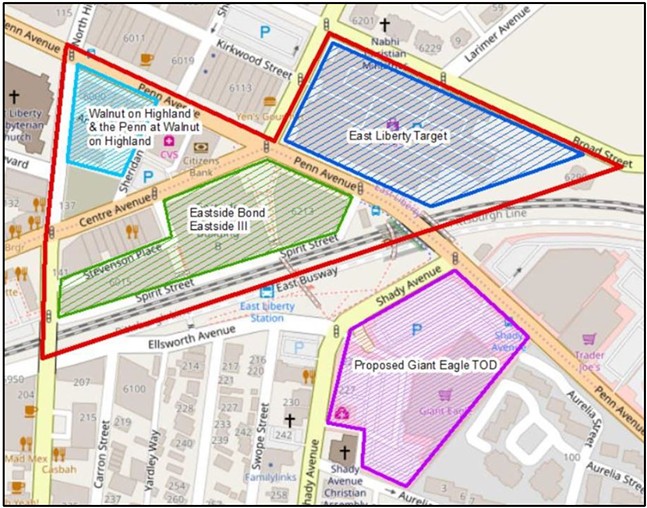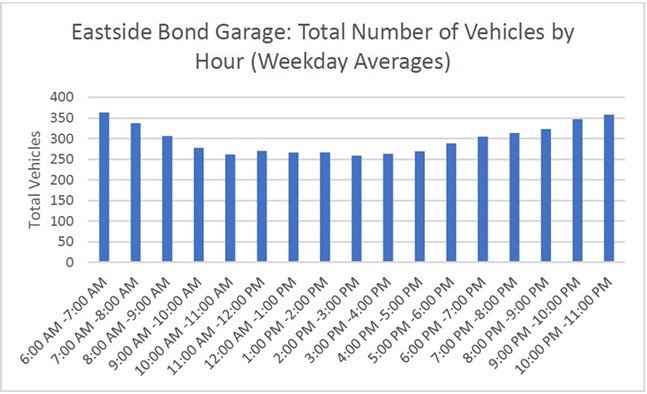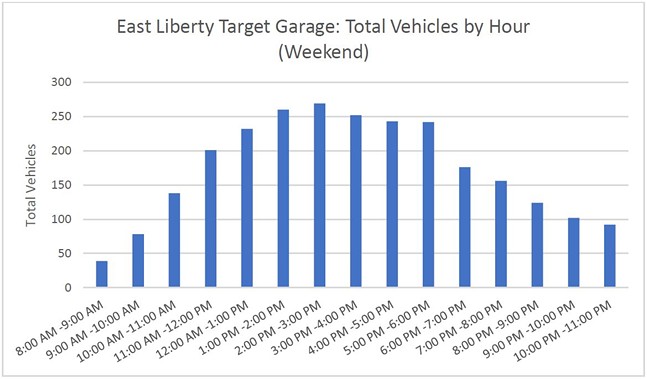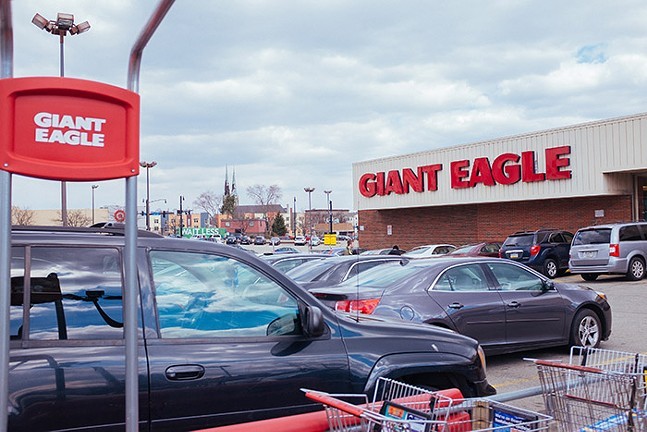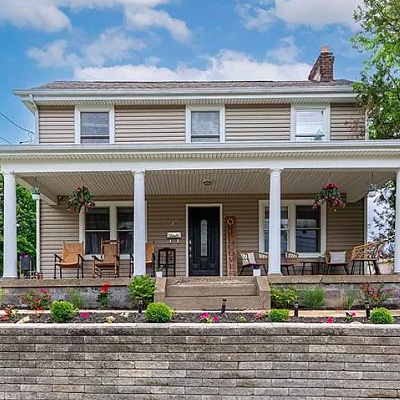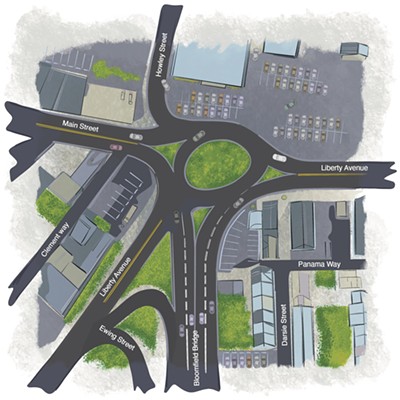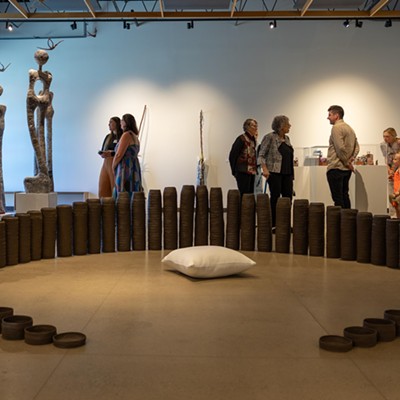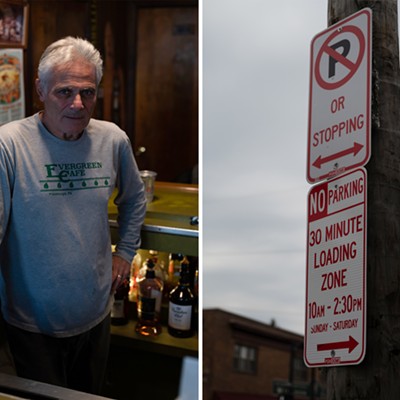Pitt paper shows parking spaces near East Liberty busway station are under utilized by 30 percent
[
{
"name": "Local Action Unit",
"component": "24929589",
"insertPoint": "3",
"requiredCountToDisplay": "1"
}
]
Typically, with new development comes new parking spaces.
Most Pittsburghers travel by car, and developers assume most of the people visiting their new retail and housing structures will need places to park. As a result, developers tend to build a lot of parking. However, there are pockets in Pittsburgh where this rationale doesn’t work. According to a 2018 report from a University of Pittsburgh grad student, one of those areas appears to be near the East Liberty busway station.
The report is titled “Measuring the Parking Characteristics of the Transit-Oriented Development” and it looks at the usage of large parking structures within close proximity to the MLK East Busway station at East Liberty. It was authored by then-grad student studying at Pitt.
Three parking structures near the busway station were analyzed: the garages at Target, the Eastside Bond apartment complex, and Walnut on Highland apartment building. These garages, according to the study, are all considered Transit-Oriented Development (TOD) since they are so close to a high-use transit station, the East Liberty busway station, not to mention several other popular bus stops.
Data was collected from 6 a.m. to 11 p.m. on three days in 2018: Tue., Oct. 9, Thu., Oct. 11, and Sat., Oct 20.
The paper's conclusions say that these three stations overbuilt their parking structures by 30 percent.
“When comparing the actual utilization to the built capacity of each TOD and the total study area, the utilization rate is between 52 percent and 70 percent during the peak hour of the weekend and weekday,” reads the report. That means these TODs were overbuilt by at least 30 percent at time of construction.
This study adds context to a battle over parking spaces currently playing out at the Shakespeare Giant Eagle redevelopment in Shadyside. Developers want to build 492 parking spaces at the planned grocery store/housing complex located just mere yards from the East Liberty busway station.
Advocates want the developer to build less parking and successfully got them to reduce the number of spaces from 550, but they think that number could be reduced even more. Housing and transit advocates believe money saved could be used to build more affordable units or to pay for transit passes for residents at the new complex.
Developers disagree. John Clarkson of Greystar Real Estate Partners, who is working on the apartments for the Shakespeare proposal, told CP in September that he acknowledges that developers should build projects with less parking, but that in this case, the demand is there.
“We don’t want to build more parking,” said Clarkson. “But right now, I would argue here that we need parking for this project.”
The report also shows that there are already too many off-street parking spaces in that area.
Eastside Bond Garage has a total of 554 parking spaces. The garage is open to the public during the day and there are also a number of leased parking spaces for residents of the 360 housing units. The peaks in day-time utilization occur between 6-9 a.m. and 6-11 p.m. During these periods, utilization was between 55-65 percent. On the weekend, peak utilization was around the same.
That means that even at peak usage, there were still about 200 empty spaces at the garage that sits almost directly on top of the East Liberty Busway station.
That station has a 4,200 combined on and offs (total number of riders boarding and leaving the bus at the station) per weekday, according to Port Authority figures. This actually exceeds the amount of weekday on and offs at the First Avenue light-rail station Downtown. When factoring all bus stops within a four-minute walk of the Shakespeare development, including the busway station, more than 6,700 people either get on or off the bus.
Laura Wiens of the grassroots organization Pittsburghers for Public Transit (PPT) wants developers to build less parking. She heralds the study as proof of what her group has been advocating for.
“In light of this it becomes very clear that we are overbuilding parking,” says Wiens. “Especially right by East Liberty transit station, the best transit area in the city.”
Port Authority spokesperson Adam Brandolph said the authority is aware of the study because of its potential impacts on transit decisions and the authority's push to advocate for TOD.
He says Port Authority hasn’t audited the report’s numbers to verify their accuracy, but the “conclusion does support our anecdotal evidence.”
According to the report, the East Liberty Target parking lot has 446 parking spaces that are used by public customers. Its peak utilization occurs between 12-3 p.m. and is between 49-52 percent during an average weekday. On the weekend, peak utilization jumped to 57-60 percent, and also occurred in the early afternoon. Even at its busiest, there were well over 100 spaces available to park.
The Walnut on Highland garage, which is only for lease-holders of the two adjoining apartment buildings with a combined 194 units, contains 182 private spaces. The buildings are occupied at 97 percent rate, but only about 70 percent of the parking spaces are utilized.
The report also looks at on-street parking in the area close to the East Liberty busway stop and notes the peak usage is about 77 percent on weekdays and 83 percent on weekends.
Wiens says future developments in the area should be focusing on housing density and trying to limit the number of parking spaces built.
“It is a big opportunity,” says Wiens. “We need more density. It will encourage more people to use [transit]. When you build more parking, you [give] incentive for more cars to come into the neighborhood.”
Wiens also notes there is a lot of money that developers set aside for parking spaces. A paper by PPT argues that Shakespeare developers could save $4.6 million if they lowered the number of parking spaces to align with the zoning minimum requirements in East Liberty, which are one parking space for every two housing units. (The Shakespeare proposal is technically in Shadyside, where minimums are higher, but developers have convinced city officials to agree to a variance to lower them before.)
A 2014 UCLA study shows that above-ground parking garages as required by parking minimums increase the cost of the average U.S. project by 31 percent.
Wiens says it makes financial sense and would be a boost for economic equity in the area if less parking was built at the Shakespeare site, especially if the money saved was used to build more affordable units and/or supply residents with transit passes.
“When we are talking about over-building by hundreds of spaces, like in Eastside Bond and Target, that is millions of dollars,” says Wiens. “There is so much wasted space.”
She says this contributes units being unaffordable to residents, which is only exacerbated by the fact that these units are close to frequent and good public transit, which is more frequently used by low-income people.
“That money should go for free bus passes,” says Wiens. “If you have 30 people getting free bus passes, that lower demands for parking.”
Read the full report is below.
Most Pittsburghers travel by car, and developers assume most of the people visiting their new retail and housing structures will need places to park. As a result, developers tend to build a lot of parking. However, there are pockets in Pittsburgh where this rationale doesn’t work. According to a 2018 report from a University of Pittsburgh grad student, one of those areas appears to be near the East Liberty busway station.
The report is titled “Measuring the Parking Characteristics of the Transit-Oriented Development” and it looks at the usage of large parking structures within close proximity to the MLK East Busway station at East Liberty. It was authored by then-grad student studying at Pitt.
Three parking structures near the busway station were analyzed: the garages at Target, the Eastside Bond apartment complex, and Walnut on Highland apartment building. These garages, according to the study, are all considered Transit-Oriented Development (TOD) since they are so close to a high-use transit station, the East Liberty busway station, not to mention several other popular bus stops.
Data was collected from 6 a.m. to 11 p.m. on three days in 2018: Tue., Oct. 9, Thu., Oct. 11, and Sat., Oct 20.
The paper's conclusions say that these three stations overbuilt their parking structures by 30 percent.
“When comparing the actual utilization to the built capacity of each TOD and the total study area, the utilization rate is between 52 percent and 70 percent during the peak hour of the weekend and weekday,” reads the report. That means these TODs were overbuilt by at least 30 percent at time of construction.
This study adds context to a battle over parking spaces currently playing out at the Shakespeare Giant Eagle redevelopment in Shadyside. Developers want to build 492 parking spaces at the planned grocery store/housing complex located just mere yards from the East Liberty busway station.
Advocates want the developer to build less parking and successfully got them to reduce the number of spaces from 550, but they think that number could be reduced even more. Housing and transit advocates believe money saved could be used to build more affordable units or to pay for transit passes for residents at the new complex.
Developers disagree. John Clarkson of Greystar Real Estate Partners, who is working on the apartments for the Shakespeare proposal, told CP in September that he acknowledges that developers should build projects with less parking, but that in this case, the demand is there.
“We don’t want to build more parking,” said Clarkson. “But right now, I would argue here that we need parking for this project.”
The report also shows that there are already too many off-street parking spaces in that area.
Eastside Bond Garage has a total of 554 parking spaces. The garage is open to the public during the day and there are also a number of leased parking spaces for residents of the 360 housing units. The peaks in day-time utilization occur between 6-9 a.m. and 6-11 p.m. During these periods, utilization was between 55-65 percent. On the weekend, peak utilization was around the same.
That means that even at peak usage, there were still about 200 empty spaces at the garage that sits almost directly on top of the East Liberty Busway station.
That station has a 4,200 combined on and offs (total number of riders boarding and leaving the bus at the station) per weekday, according to Port Authority figures. This actually exceeds the amount of weekday on and offs at the First Avenue light-rail station Downtown. When factoring all bus stops within a four-minute walk of the Shakespeare development, including the busway station, more than 6,700 people either get on or off the bus.
Laura Wiens of the grassroots organization Pittsburghers for Public Transit (PPT) wants developers to build less parking. She heralds the study as proof of what her group has been advocating for.
“In light of this it becomes very clear that we are overbuilding parking,” says Wiens. “Especially right by East Liberty transit station, the best transit area in the city.”
Port Authority spokesperson Adam Brandolph said the authority is aware of the study because of its potential impacts on transit decisions and the authority's push to advocate for TOD.
He says Port Authority hasn’t audited the report’s numbers to verify their accuracy, but the “conclusion does support our anecdotal evidence.”
According to the report, the East Liberty Target parking lot has 446 parking spaces that are used by public customers. Its peak utilization occurs between 12-3 p.m. and is between 49-52 percent during an average weekday. On the weekend, peak utilization jumped to 57-60 percent, and also occurred in the early afternoon. Even at its busiest, there were well over 100 spaces available to park.
The Walnut on Highland garage, which is only for lease-holders of the two adjoining apartment buildings with a combined 194 units, contains 182 private spaces. The buildings are occupied at 97 percent rate, but only about 70 percent of the parking spaces are utilized.
The report also looks at on-street parking in the area close to the East Liberty busway stop and notes the peak usage is about 77 percent on weekdays and 83 percent on weekends.
Wiens says future developments in the area should be focusing on housing density and trying to limit the number of parking spaces built.
“It is a big opportunity,” says Wiens. “We need more density. It will encourage more people to use [transit]. When you build more parking, you [give] incentive for more cars to come into the neighborhood.”
Wiens also notes there is a lot of money that developers set aside for parking spaces. A paper by PPT argues that Shakespeare developers could save $4.6 million if they lowered the number of parking spaces to align with the zoning minimum requirements in East Liberty, which are one parking space for every two housing units. (The Shakespeare proposal is technically in Shadyside, where minimums are higher, but developers have convinced city officials to agree to a variance to lower them before.)
A 2014 UCLA study shows that above-ground parking garages as required by parking minimums increase the cost of the average U.S. project by 31 percent.
Wiens says it makes financial sense and would be a boost for economic equity in the area if less parking was built at the Shakespeare site, especially if the money saved was used to build more affordable units and/or supply residents with transit passes.
“When we are talking about over-building by hundreds of spaces, like in Eastside Bond and Target, that is millions of dollars,” says Wiens. “There is so much wasted space.”
She says this contributes units being unaffordable to residents, which is only exacerbated by the fact that these units are close to frequent and good public transit, which is more frequently used by low-income people.
“That money should go for free bus passes,” says Wiens. “If you have 30 people getting free bus passes, that lower demands for parking.”
Read the full report is below.

